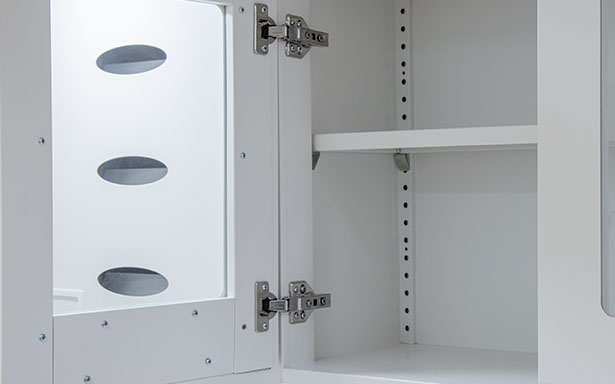Any industrial product design is a process of selecting reasonable materials and planning how to transform them into products. The birth of an epoch-making product benefits from the use of new materials. Therefore, materials are the material carrier and foundation of industrial product design.
Medical furniture not only has a wide variety of types and materials, but also presents the characteristics of combining multiple materials. At present, the main materials used in medical furniture are mainly the following:
1. Wood
Solid wood is the most primitive furniture material and has been used since the beginning of furniture. Based on the advantages and disadvantages of wood, usage scenarios and functions, the medical furniture currently using solid wood is mainly medicine cabinets for Chinese medicine prescriptions, wooden chairs, high-end wards or sanatoriums, and other wooden medical furniture is mainly a combination of wood and other materials such as artificial boards, such as board wood furniture, plastic wood furniture, sofa inner frames, etc.
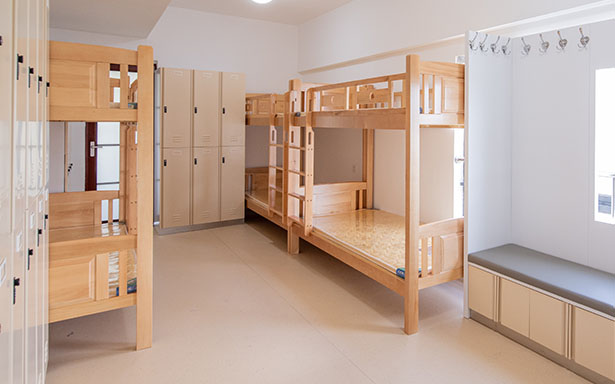
2. Artificial board
Artificial boards have become the main surface decoration and structural materials for medical furniture. They are made of wood or other non-wood plant fibers, separated into various unit materials through certain mechanical or (and) chemical processing, and then made into boards after applying or not applying adhesives and heating and pressurizing. Wood artificial boards mainly include plywood, particleboard, fiberboard, hollow board, blockboard, integrated wood, veneer laminated wood, etc.
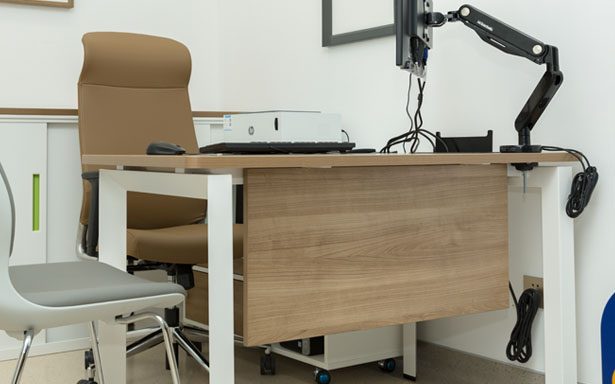
3. Veneer material
Since most of the surfaces of artificial boards do not have the natural texture of wood, and even if they do, some of the textures are not beautiful or are the textures of cheap tree species, various veneers and edge sealing materials must be used to seal the surface and edges for decoration and protection. Decorative veneer materials are also called finishing materials. Solid boards with finishing materials on the surface are called veneers, also known as veneers.
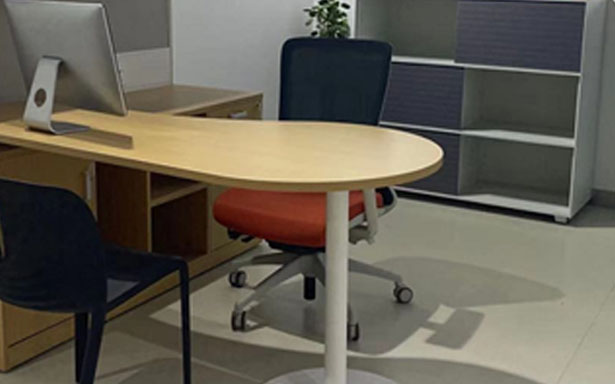
4. Stone
Stone is divided into natural stone and artificial stone. Artificial stone is widely used in medical furniture. Artificial stone is actually a kind of "polymer material polymer", which has the characteristics of non-toxicity, radioactivity, flame retardant, non-stick oil, non-fouling, antibacterial and mildew-proof, wear-resistant, impact-resistant, easy to maintain, seamless splicing, and various shapes. According to different adhesives, it can be divided into two categories: organic artificial stone and inorganic artificial stone. According to different production processes, it can be divided into four types: polyester artificial stone, composite artificial stone, silicate artificial stone, and sintered artificial stone. Among the four types of artificial stone decorative materials, organic (polyester type) is the most commonly used, and its physical and chemical properties are also the best. Therefore, the polyester artificial stone, also known as resin artificial stone, is used in medical furniture.
Due to the high cost of aluminum hydroxide, some unscrupulous manufacturers add calcium powder, namely calcium carbonate, in the production of resin-based artificial stone. Generally, the service life of medical furniture using artificial stone is about 10 years. Once the countertop is adulterated, the life span is only 1-2 years.
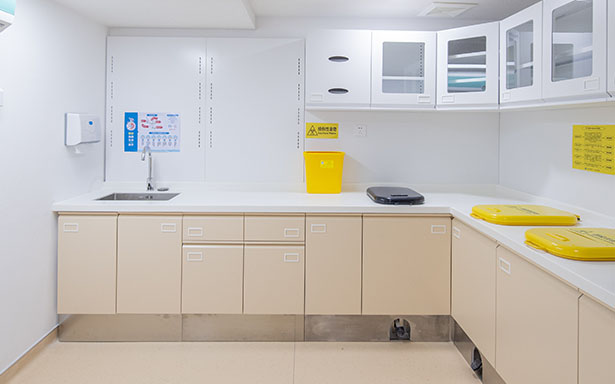
5. Plastic
Plastics are made of natural resins or synthetic resins (also known as synthetic polymer compounds). Under certain temperature and pressure conditions, the raw materials can be molded into plastic parts with certain shapes and sizes using molds. When the external force is removed, the shape remains unchanged at room temperature. Plastics have good comprehensive properties such as high strength-to-weight ratio, corrosion resistance, wear resistance, insulation, sound absorption, shock absorption, easy molding, and easy compounding. Compared with other materials, plastics can easily produce complex curved surfaces that conform to the curves of the human body, so plastic chairs are increasingly used in hospitals. In addition, there are small cabinets and carts, such as bedside tables in wards, medicine carts, and instrument carts.
The polymer raw materials commonly used in the production of hospital plastic furniture are: PP (polypropylene), nylon (polyamide PA), ABS (acrylonitrile-butadiene-phenylacetic acid terpolymer), PU (polyurethane), fiberglass reinforced plastic (GFRP or FRP), etc.
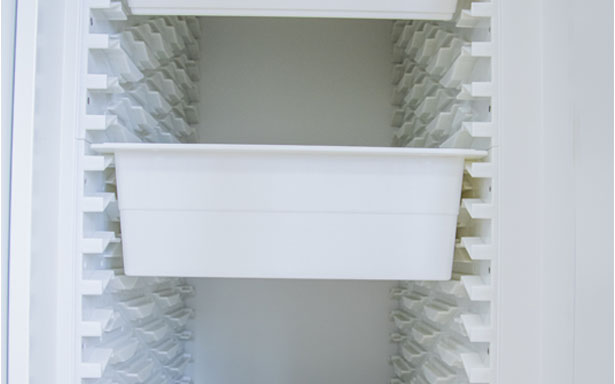
6. Metal
The metal materials used in medical furniture mainly include various high-quality thin-walled carbon steels, stainless steels, aluminum alloys, etc. Due to the particularity of the hospital environment, many precious documents, photos, instruments, and expensive medicines have fireproof, moisture-proof, anti-magnetic, and anti-theft functional requirements, and metal furniture, especially cabinet furniture, can meet these requirements very well, so metal materials are widely used in medical furniture.
In addition to the above advantages, it also has the excellent property of being not easy to rust, and is often used to make medical furniture such as instrument cabinets, surgical equipment cabinets, western medicine cabinets, and freezers.
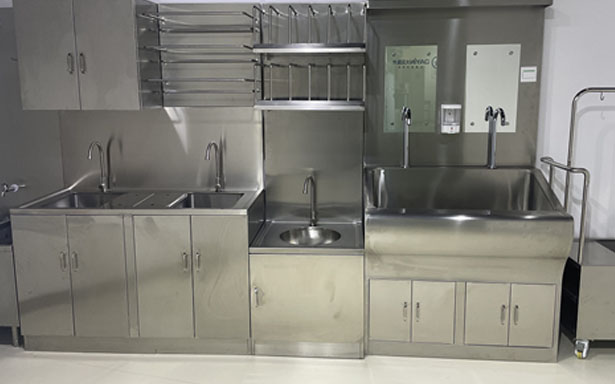
7. Hardware
Modern medical furniture, especially furniture made of wood and artificial boards, requires hardware to connect and fasten parts, and to decorate and improve the shape and structure of furniture. When purchasing metal furniture for hospitals, first look at the wall thickness: the wall thickness of good metal furniture is 1.2mm-2.5mm, and the wall thickness of inferior furniture is 0.5 mm-1.0 mm; second, look at the welds: all welds of good metal furniture structures are polished smooth; third, look at the spray painting: regular products must go through many processes such as degreasing, pickling and rust removal, phosphating, rinsing, dust removal, powder spraying, drying, cooling, and packaging before they can leave the factory. Due to the particularity of the hospital environment, the requirements for hardware are relatively high. Therefore, when designing and purchasing medical furniture, well-known brands of hardware should be selected to ensure the quality and reliability of the furniture.
